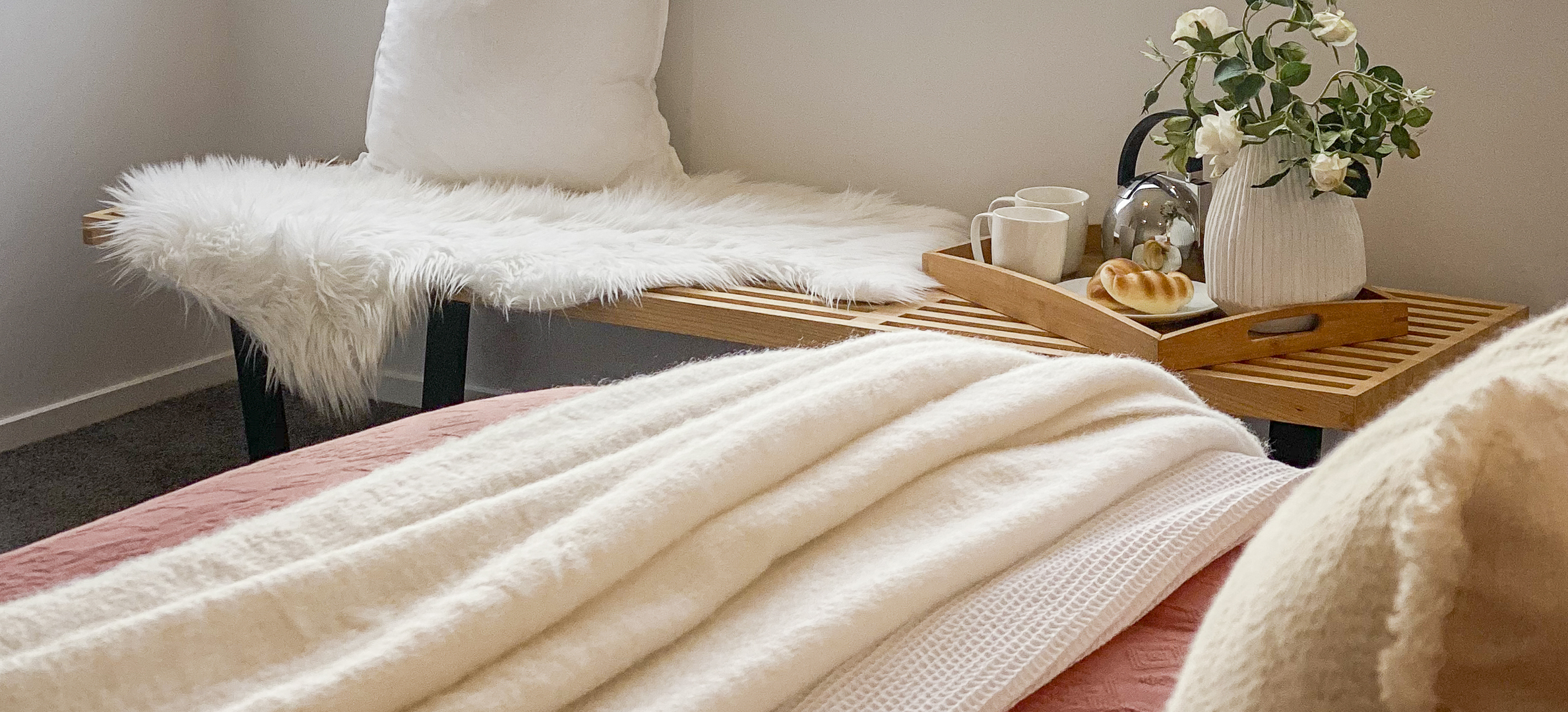
The ultimate goal with home staging is to evoke a mood that home buyers can relate to, but these days, potential buyers are getting smarter and smarter. They see through staging tricks more often than not, and can tell when a home stager has put phoney tricks in place to make a house seem more appealing.
Let’s dive into some tricks that we’ve all seen in an open home or two that just don’t work if you want to convincingly sell your home.
Taking Shortcuts with ‘Minimalist’ Staging
Minimalism is a design trend that utilises blank or empty space in an area, and only places necessary or functional items in a room. This can look very sleek if done properly, but true minimalism isn’t as easy as many home stagers think. What happens a lot in home staging is that stagers will try to take shortcuts and place less furniture or items in a room – stating this is ‘minimalism’.
This has a tendency to look more like a room has been half-staged or is unfinished and can be off-putting to potential buyers. It can also highlight or enhance flaws within the room that would otherwise be overlooked when staging is done well.
For example, if a lounge is staged with only a single couch and the floor left bare, there is a lot of empty space for the eye to rest on and flaws in the paint job or the flooring become more prominent in the overall look of the room.
Although home staging never aims to purposely disguise flaws from potential buyers, the goal is always to make it look like the house is liveable despite small flaws. What minimalism does is remove that feeling, as the ‘minimalist’ aesthetic is cold and unfriendly by nature.
If you are going for a minimalist look, try to use monochromatic colours or sleek, straight lines with furniture in order to achieve it. You can achieve minimalism without taking shortcuts or putting less furniture than average in a room, and this way it can be much more effective.
Food in Unnecessary Places
Home stagers placing real food in staged settings is another unusual tactic. We all understand that the purpose of home staging is to make the home seem like it could be lived in at the drop of a hat – but this doesn’t need to extend all the way to cooking a roast dinner to set out on the table, or leaving breakfast-in-bed on a tray in the master bedroom.
Not only does real food have the ‘is it plastic or real?’ effect that can be highly distracting, it also creates unnecessary odours that could potentially be off-putting to potential house owners. For example, if you cook bacon and eggs to give the illusion of a Sunday brunch, the smell of bacon could be incredibly off-putting to a vegetarian who would be otherwise interested in the house.
Food is generally a no-go zone when staging, but it can be effective if you use it purposefully. If you want to greet open home guests with a tray of biscuits or a refreshing glass of lemonade, feel free as this can make people feel at home and win them over in the long run.
Excessive Bathroom Décor
Bathrooms are generally a room for functionality, and while it is extremely important to have a beautiful and clean bathroom, the way to go about this is not through décor and accessorising. If you think about bathrooms in most homes, the décor is usually lead by the function: decorative soaps, towels, and showerheads. There isn’t much place for ornamental accessorising in a bathroom, and it can be distracting for viewers when they see these.
Another common trick home stagers use in bathrooms is to fill a bath and decorate it with bubbles, rose petals or a glittery bath bomb. Although a trendy feature, this can have a concerning effect on viewers of a home – as it can be seen to be hiding the surface of the bath itself. For all the viewer knows, underneath all the frills of a bubble bath could be a scummy or stained bath floor, and they have no way of knowing.
To sum up, transparency is key when staging bathrooms. This, however, does not mean that you shouldn’t take your bathroom heavily into consideration when selling your home. If you think your bathroom might not be up to scratch, you may want to consider what the return on investment of renovating or upgrading your bathroom’s features will have once you sell.
Strong Perfumes
We’ve all been to an open home where we are greeted with the smell of freshly baked cookies or a luscious rose garden to entice us inside – when the objects of the identified scent are nowhere to be seen. Perfumes are a common staging trick that is used when selling homes but it is one that is not so often successful.
Strong scents, more often than not, will have negative effects on most people. It can be overwhelming to walk into a home and sense a strong odour in the air – whether it is a pungent floral scent, or the sickly-sweet smell of baking. Furthermore, what some people may find enticing and delicious to smell might cause other people to turn their noses up.
Of course, it is important to present a nice smelling home when people come to view it. A way to go about this safely is to let fresh air in and perfume the home naturally, or spray a neutral scented room spray just a touch – lemongrass or cucumber are safe scents.
The key here is to make sure you are using perfumes to freshen up the house for the right reasons, and not trying to disguise the smell of dampness or mould. If that’s the case, you may have bigger issues than staging when it comes to selling.
Stage Your Home the Right Way
If you’re looking for someone who knows the ins and outs of Wellington home staging, and can stage your home the right way, look no further. At Home Staged, we’re experts in staging modern homes for modern buyers. Contact us today to talk about your staging needs!




